Instead, I'm just going to throw out the links with a few comments. If these questions go around in your head too, let me know what you're thinking!
About Information Literacy
"Technology should be taught with inconsequential content . That way, when there's important content, the technology will be transparent."
?? This makes so much sense, but it's contrary what we've been doing, which is to teach about databases, efficient searching, etc., when students have a pressing "need to know" (the research has been assigned and they have a chosen topic) so the skills are immediately relevant. When there are limited opportunities to work with students on their research skills, should I focus on low-stakes-relevant-later or high-stakes-relevant-now presentation times? Should there be a short-term class in Information Literacy skills that's not tied to course content and assignments?
Why Kids Can't Search (Clive Thompson op-ed on Wired.com)
Because they've never been taught to search well, they just figure it out on their own. Where can schools find time in the day to teach content AND skills, especially if they don't overlap?
About eBooks
Renting Out the Library (on Digital Public Library of America blog)
A different model of acquiring digital content for library loaning, based on the old Blockbuster model -- instead of paying for digital media up front for a set price, pay a royalty for each loan. Publishers then benefit from increased circulations, instead of griping about lost revenues.
This Deal is Getting Worse All the Time (at Library Renewal)
Why I'm uneasy about providing ebooks through another third-party vendor. They control who, when and what, instead of this library) and the terms can change at any time.
But -- (an aside musing) -- why are libraries, this one included, ok with providing periodical content to patrons through an annually renewable subscription with a third-party vendor? All our databases, ProQuest, SIRS, CQ Researcher, JSTOR, are provided through this model. Are we just used to it? Are books intrinsically different to journal articles?
Douglas County [Colorado] Public Library system has created its own ebook collection and loaning system completely independent of OverDrive, 3M or other middle-man distributor, using Adobe Content Server software. I would love to be able to set up a consortium like this for school libraries statewide. We buy the ebooks, we protect the files from piracy, we loan them out to our students. Why not?
About Other Stuff
 Thinkertoys
ThinkertoysThis book is on the suggested reading list at Un-college.org. It's a huge collection of exercises, techniques and strategies for developing creative thinking -- because the author believes that creative thinking CAN be developed. If you're really good at thinking inside all the corners of your box (like me), but find it harder to look outside of it, check this book out.
Libraries as Places of Idea Creation (not just Idea Storage & Retrieval)
"Throughout history libraries have been highly effective as what we might call idea storehouses. Universities and schools have been highly effective as idea communicators. But, particularly at a time when many are questioning the relevance of libraries (thinking in terms of the ‘storehouse’ model), might we develop libraries further as idea factories? The place you go to generate ideas in the first place?"
Libraries as Hackerspaces (an NPR Weekend Edition story)
"We see the library as not being in the book business, but being in the learning business and the exploration business and the expand-your-mind business," he says. "We feel this is really in that spirit, that we provide a resource to the community that individuals would not be able to have access to on their own." If you have a woodshop and a 3D printer, but nobody's using your resources to discover and use information, are you still a library? Where is the line between being a place of information/idea creation, and being a computer lab, or Kinko's?
World Book Night (Sydney got an notice through Sherman Alexie's email list)
50,00 people distributing 20 books each, all on one night (April 23, 2012), to promote reading. Wonder if we could organize a student group to distribute one of these titles? Where would be a good place, with non- or light readers, where we could distribute 20 copies? So many great titles (the library has all but one or two), which would we choose?
Junior High Book Club
This is exciting, and from the brain of the fabulous Greg Changnon. In January, he and I will kick off a reading club for the voracious 7th & 8th grade readers. The first selection is likely to be Cherie Priest's Boneshaker (go, steampunk!)
Move Over, Edward, Things Are Really Really Bad Here.
"Dystopia is the New Paranormal" - dystopian YA novels jumping to the big screen soon, and may get a new readership with all the publicity. Some moms and I were amused by a certain (adorable) group of girls' passion for the "I'm inexplicably in love with a tormented fallen angel boy who thinks I'm hot but who won't hurt me" genre. Yes, "paranormal romance" is an actual category on Amazon.com. But the fallen angels haven't followed the vampires all the way to Hollywood yet, and may be forever stalled by the bow-wielding Katniss and friends.
Enjoy your December holiday, and maybe your neighbors' holidays too! One can never have too many holidays.




 The Strange Affair of Spring-Heeled Jack
The Strange Affair of Spring-Heeled Jack









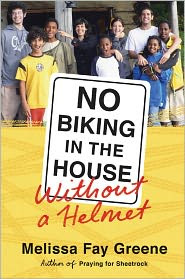
 These days I fear I dream about eBooks and how to include them in our Library offerings (actually, I don't fear it, I've really dreamed it. Yikes!) The vendor and platform market is in major flux, and I feel like Indiana Jones on a precipice with a herd of wildebeasts rushing towards, wanting to jump but having no clue which way to go (better than an army of ravenous red ants, but only a little bit). It's not the time to invest thousands of $$$ in one vendor, to find that in 6 months the subscription fee triples, and there's no 'ownership' of or rights to transfer eBooks we think we've 'bought.' Oi, these are good times to be a copyright lawyer!
These days I fear I dream about eBooks and how to include them in our Library offerings (actually, I don't fear it, I've really dreamed it. Yikes!) The vendor and platform market is in major flux, and I feel like Indiana Jones on a precipice with a herd of wildebeasts rushing towards, wanting to jump but having no clue which way to go (better than an army of ravenous red ants, but only a little bit). It's not the time to invest thousands of $$$ in one vendor, to find that in 6 months the subscription fee triples, and there's no 'ownership' of or rights to transfer eBooks we think we've 'bought.' Oi, these are good times to be a copyright lawyer!
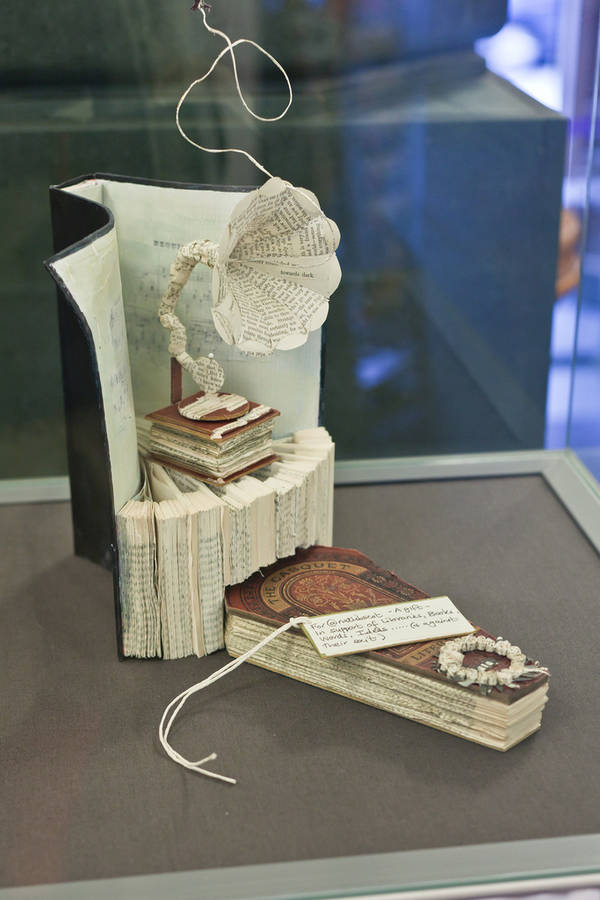

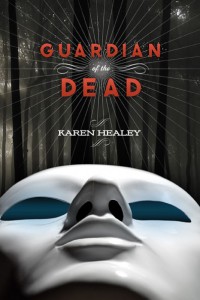


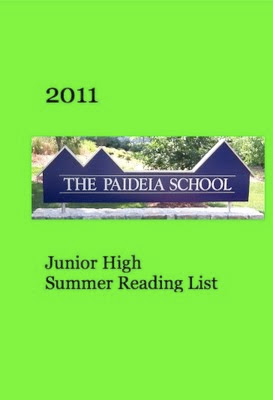



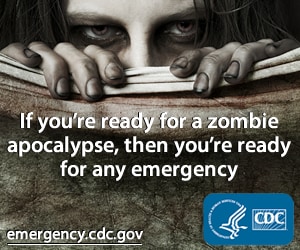
 It was great timing. Elizabeth Lide's Drawing and Design art class mounted a display of their Altered Books projects the week before the 40th Anniversary book release party here in the library. Books everywhere!
It was great timing. Elizabeth Lide's Drawing and Design art class mounted a display of their Altered Books projects the week before the 40th Anniversary book release party here in the library. Books everywhere!


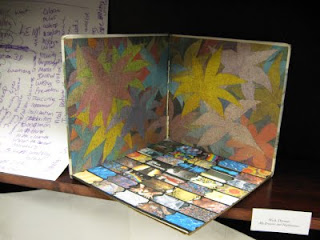


 Altered Art: Techniques for Creating Altered Books, Boxes, Cards and More
Altered Art: Techniques for Creating Altered Books, Boxes, Cards and More


 Finally, a compelling reason (for me, at least) to have library-owned Kindles to loan.
Finally, a compelling reason (for me, at least) to have library-owned Kindles to loan.
 John & Sydney's class came on a library field trip this morning to explore The Hero's Journey. They had talked some about Joseph Campbell's archetype in relation to their lit book,
John & Sydney's class came on a library field trip this morning to explore The Hero's Journey. They had talked some about Joseph Campbell's archetype in relation to their lit book, 

